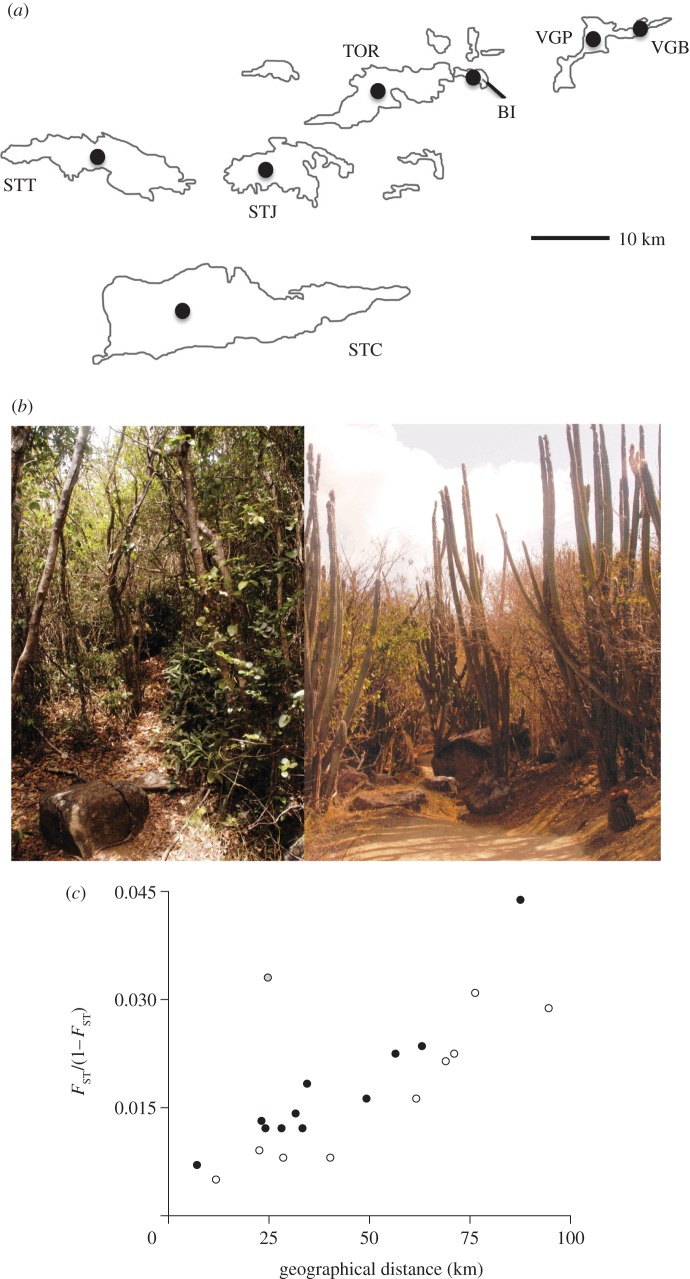Figure 1.
Populations of Amphiacusta are restricted to two different habitats within the Virgin Islands and display a pattern of genetic isolation-by-distance. (a) Map of the Virgin Islands with the location of sampled populations marked by black circles and labelled with population designations. (b) Photographs illustrating the two very different habitats in which Amphiacusta occur—either wet tropical forests or dry (desert-like) forests. (c) A significant pattern of isolation by distance across islands is evident (Mantel test: r = 0.756, p = 0.0056). There was also a significant correlation between genetic distance and habitat type when controlling for the effect of geographical distance (partial Mantel test: r = 0.767, p = 0.028). FST-values for wet versus wet forest comparisons are in white, for wet versus dry forest comparisons are in black, and for dry versus dry comparisons are in grey. STC, Saint Croix; STT, Saint Thomas; STJ, Saint John; TOR, Tortola; BI, Beef Island; VGP, Virgin Gorda Peak; VGB, Virgin Gorda Baths.

